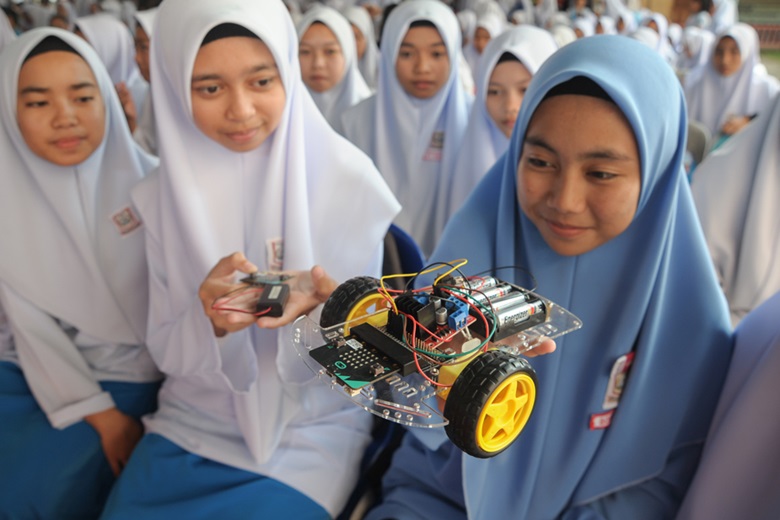To Optimize Human Potential, We Need More Women in Tech

According to the APEC Executive Director, encouraging girls to explore science and engineering starts at home and at the policy level
Policymakers are heading to Putrajaya in the coming days for a series of activities including the first APEC Senior Officials’ Meeting for the year, where they will elaborate on the theme put forward by host economy Malaysia on “optimising human potential.”
The focus on human potential reminds me of Barbarita Lara, a computer engineering student who is the first Chilean to earn a spot on the Massachussetts Institute of Technology’s prestigious global list of innovators under 35.
An app that Lara had designed, using radio infrastructure instead of telephone or internet lines, enables communication during natural disasters—a potential life saver for thousands of communities across the hazard-prone Asia-Pacific region.
In a world of gender parity, Lara would not be an anomaly. In a world of optimised human potential, as Malaysia envisions, women’s participation in science, technology, engineering, and mathematics, or STEM, is the norm. We are not there yet.
According to the APEC Policy Partnership for Women and the Economy, or PPWE, women still account for only 20 percent of the tech industry—a sector that offers good jobs and salaries. Faculties of science, engineering, and math, in 14 APEC economies count women as less than half of all graduates, according to the APEC Women and the Economy Dashboard. In some economies, women account for only 15 percent of all jobs in engineering, manufacturing, and construction.
Indeed, an emerging pattern in tech sees women techpreneurs helping other women. Take, for example, the winners of this year’s APEC Digital Prosperity Award: a duo of Malaysian programmers inspired by women farmers asking them for advice. The app that Faezrah Rizalman and Jeanette Goon created, called Bayu Harvest, enables farmers to manage the pricing of their crops as well as its marketing. As middlemen lose prominence, the women farmers’ incomes multiply.
When academia joins hands with the private sector, similar positive outcomes ensue. Engineering student Belen Guede—another Chilean bright spark—is enabling girls to study robotics and other tech fields of study through the STEM Academy. Peruvian start-up Laboratoria trains women, who are mostly low- and middle-income without advanced education, through bootcamps in Mexico and Peru and and finds them jobs. Some 80 percent of its 1,200 alumni have been placed across hundreds of companies, with starting salaries that are more than twice the average salary in the economies.
Governments also play a key role in bringing more women and girls into STEM, as outlined in the APEC Women in STEM framework, which lists four areas for policy action: an enabling environment, education, employment and entrepreneurship.
For employment, economies can usher in labor market reforms that enable more women to work. Policy action can include encouraging companies to hire more women and making childcare more affordable.
Encouraging women and girls to reach their full potential also starts at home. Many women and girls are discouraged by their families and societies from pursuing traditionally male-dominated occupations.
Again, many APEC economies are trying to reverse long-held perceptions. Some economies are introducing computer science in primary school to level the playing field. Others are allowing women to work in sectors traditionally occupied by men, such as mining.
Changing cultural norms will require a mindset change by all of us and it won’t be easy to move from platitudes to meaningful action. But we won’t achieve sustainable and inclusive growth until the opportunities we face are shared with everyone. Datuk Ir. Dr. Siti Hamisah Binti Tapsir, the Secretary General of the Ministry of Energy, Science, Technology, Environment and Climate Change, said it best in her keynote at a public-public dialogue on science, technology and innovation in Putrajaya, when she pointed out, “at the end of the day it is about humans. It is humanity that we must focus on.”
I look forward to deeper dialogue throughout 2020 on how we will truly optimise the potential of everyone in APEC.

